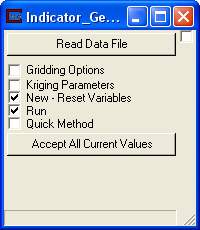
Indicator_Geology also includes a rigorous probabilistic approach to geologic indicator kriging. For this approach, the probability foreachmaterial is computed for everycellinyour grid. The materialhavingthe highest probability(for an individual cell)is assigned to the cell. All of the individual material probabilities arealsoprovided as additional cell data components. This will allow you to identify regions where the material assignment is somewhat ambiguous. Needless to say, this approach is much slower (especially with many materials), but often yields superior results and interesting insights.
The application we will be running in this topic uses the Rigorous (not the Quick) Method which takes a little longer to run. It can be loaded from ctech\applications\pro\ 5_material_complex_indicator_geology_prob.v. It looks identical to the previous topic's application, except that the Quick Method toggle is off.

The network is shown in the figure below:
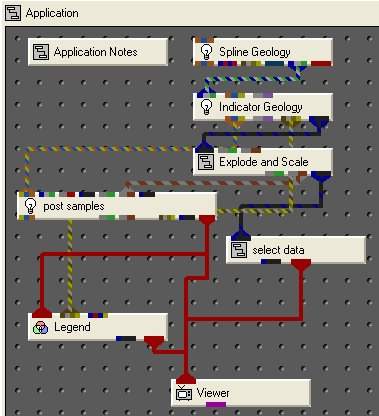
If you build this network instead of loading it, turn off Autonormalize in the Viewer to keep our view from changing when the data changes:
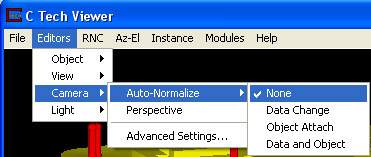
When this application runs, set the view to match:
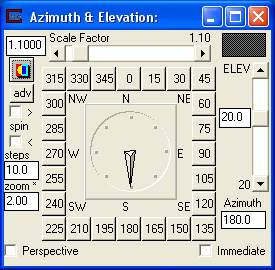
Turn on the remaining materials in Explode_and_Scale, and the resulting model shows:
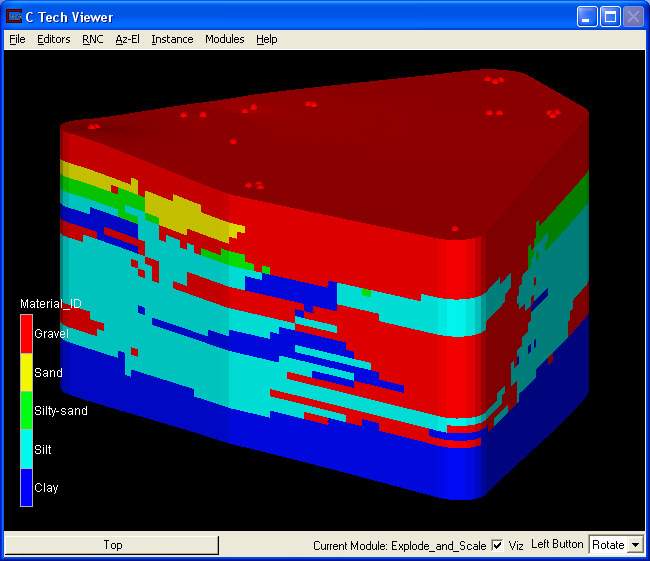
Note the similarities and differences as compared with the Quick Method. With the probabilistic method there seems to be more fine structure and small detail variation. This tends to occur only in areas where the confidence in the material assignment is low. This kriging approach gives us several ways to investigate this.
The following five figures show the individual cell sets corresponding to each material. The visibility of each cell set is controlled using the Explode_and_Scale module's Geologic Layer toggles (even though these are materialsnot layers).
By selecting only Clay (the first material) in Explode_and_Scale, the clay zones are shown below.
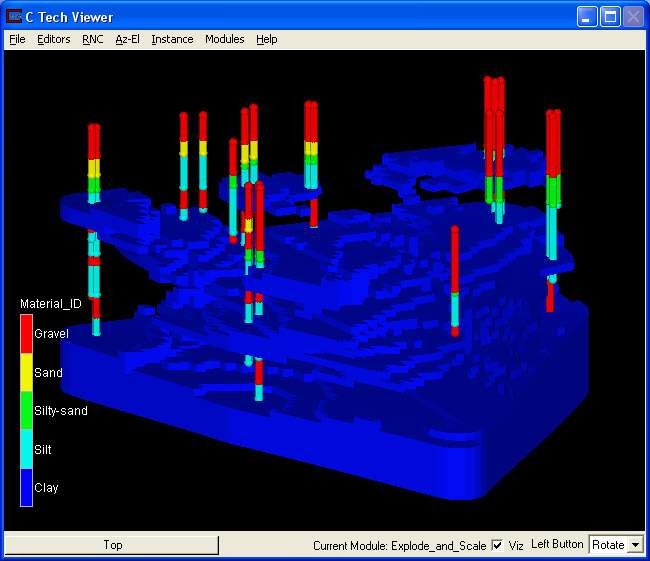
For the second material, the silt zones are shown below.
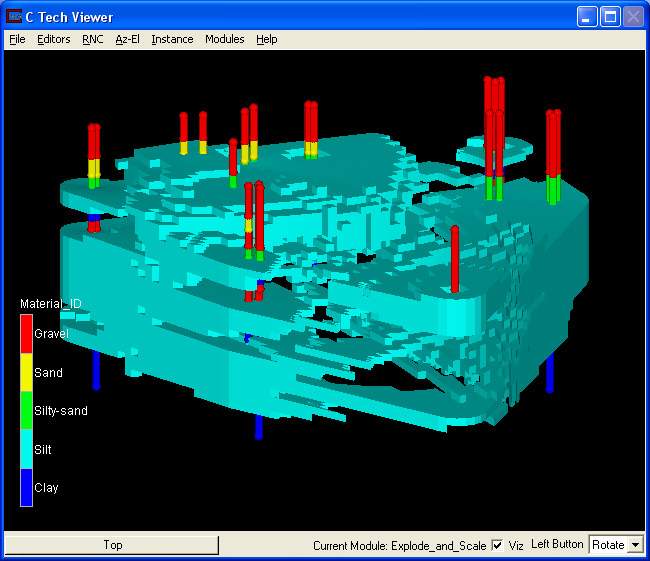
For the third material, the silt/sand zones are shown below.
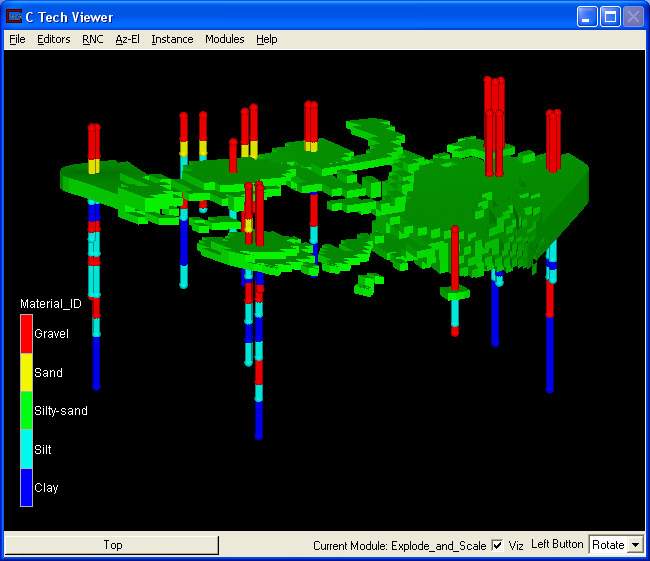
For the fourth material, the sand zones are shown below.
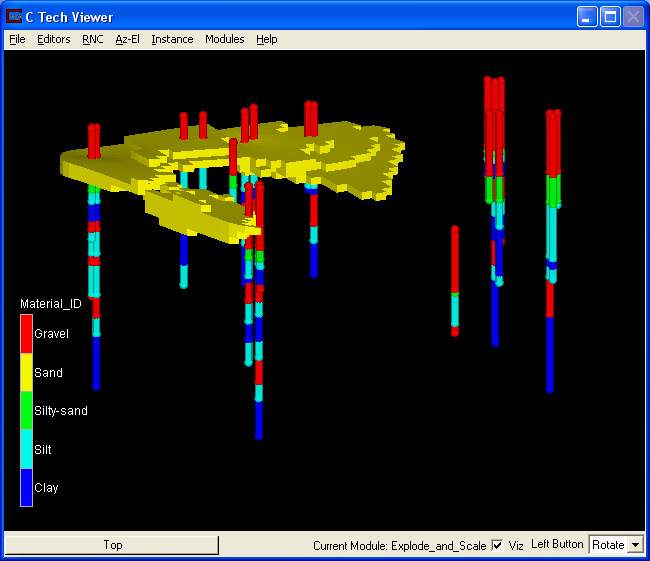
For the fifth material, Explode_and_Scale should look like:
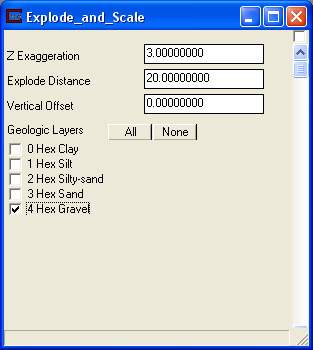
and the gravel zones are shown below.
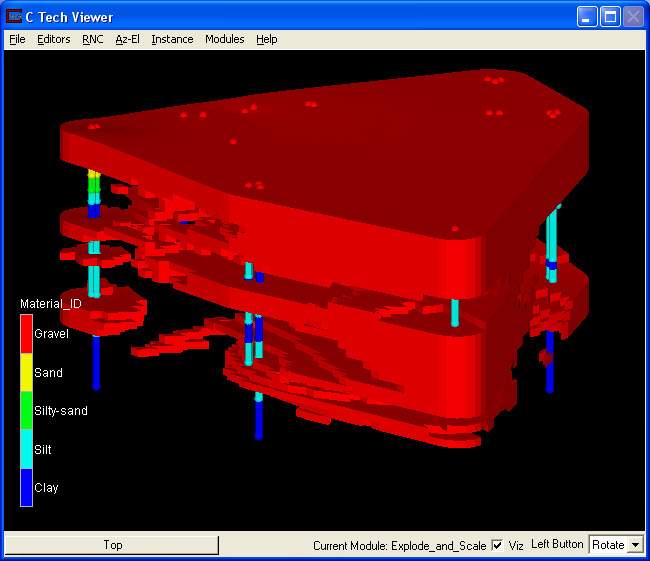
© 1994-2018 ctech.com